Soft layered chapati recipe is surprisingly simple and straightforward. Chapatis are a staple in Indian cuisine, enjoyed across the country and beyond. Other names for chapati are roti, parathas, tortillas, chapathi among others.
These unleavened flatbreads are made from whole wheat flour, water, and salt, cooked on a griddle or skillet. They are versatile and accompany a wide range of dishes, from curries to vegetables, lentils, and meats.
Soft and layered chapatis have a delicate texture, with flaky layers that add an extra dimension of flavor and mouthfeel. Achieving this softness and layering is a mark of skill in traditional Indian cooking, and many seek to replicate it at home.
The key factors in achieving soft chapatis is by using a proper kneeding technique, using a medium heat among others. Don’t blame it on the type of chapati flour, or the type of oil or margarine you use.
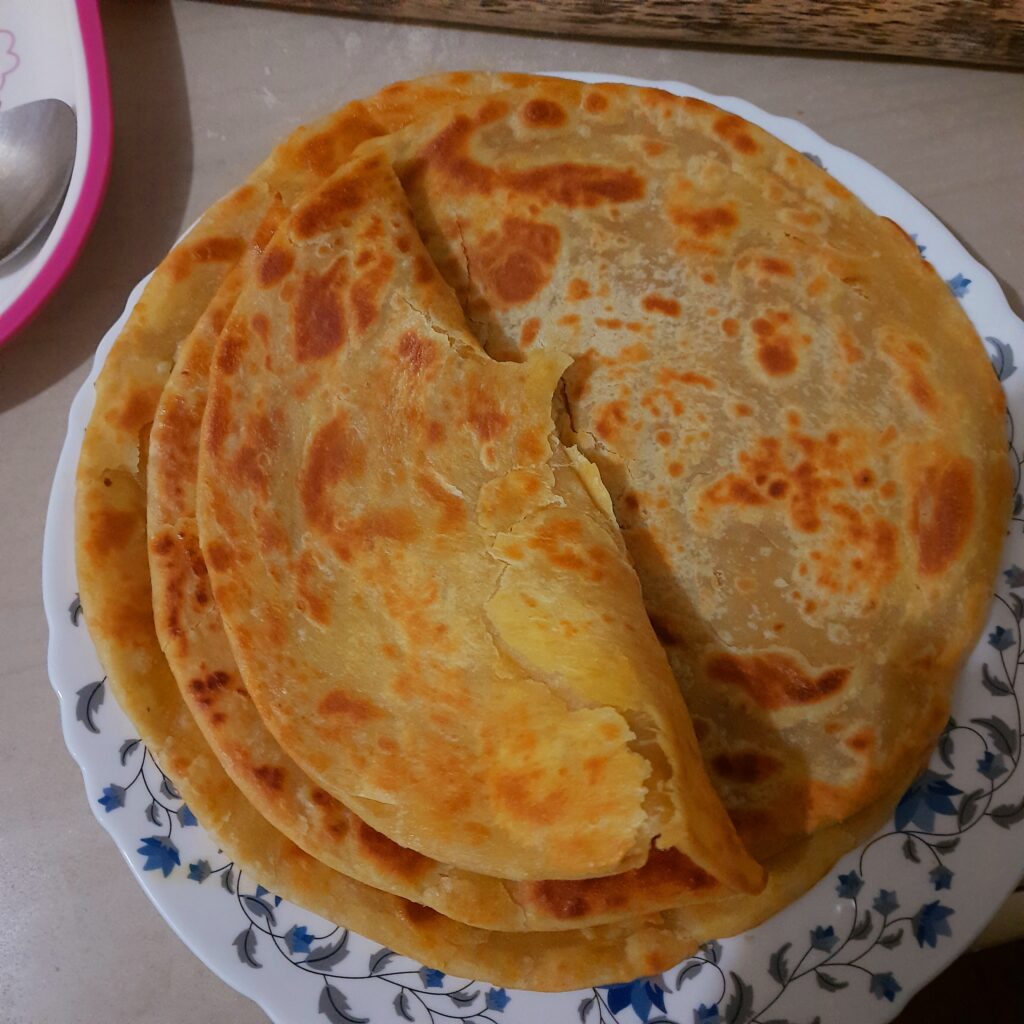
Soft layered chapati ingredients
These ingredients are commonly found in most kitchens, making this soft layered chapati recipe accessible to all.
- Whole Wheat Flour: 2 cups
- Water: Approximately 1 cup (for kneading)
- Salt: 1/2 teaspoon
- Oil or Ghee: 2 tablespoons (for dough and layering)
Optional Ingredients for Customization
- Spices: Such as cumin seeds, ajwain (carom seeds), or crushed black pepper for added flavor.
- Herbs: Fresh cilantro, mint, or dried fenugreek leaves (kasuri methi) for a herbal touch.
- Garlic Paste: 1 teaspoon for a savory kick.
- Yogurt: 2 tablespoons for a tangy flavor and softer texture.
- Milk: Instead of water, for an even softer chapati.
- Sugar: A pinch, for those who prefer a slightly sweeter taste.
Tips for making soft layered Kenyan chapati
- Kneading Technique: Ensure the dough is kneaded well. Use lukewarm water gradually while kneading to attain a smooth, soft consistency. Letting the dough rest for about 15-20 minutes helps relax the gluten, making it easier to roll out the chapatis.
- Proper Division of Dough: Divide the dough into evenly sized portions. This helps in rolling out uniformly sized chapatis, which aids in layering.
- Layering Technique: Apply a thin layer of oil or ghee over the rolled-out chapati. Folding or pleating the chapati before rolling it again creates layers. Avoid pressing too hard while rolling to maintain these layers.
- Cooking Temperature: Preheat the skillet or tawa on medium-high heat before placing the chapati. Cooking on a hot surface ensures that bubbles form quickly and the chapati cooks evenly without becoming dry.
- Flipping Technique: When bubbles start to appear on the surface, flip the chapati. Cook for a short time on the other side and then flip it again. Apply oil or ghee sparingly on both sides while cooking to retain moisture and enhance softness.
- Covering to Keep Soft: Once cooked, cover the chapatis in a cloth or keep them in a covered container to trap the steam, keeping them soft and pliable.
- Practice and Patience: Achieving perfectly soft and layered chapatis might take some practice. Be patient and persistent with the layering technique, and adjust the heat and cooking time according to your stove and skillet to avoid overcooking or burning.
How to make soft layered chapati
Mix ingredients: Combine chapati flour, salt, sugar, and oil or ghee in large a mixing bowl. Gradually add water and mix to combine.
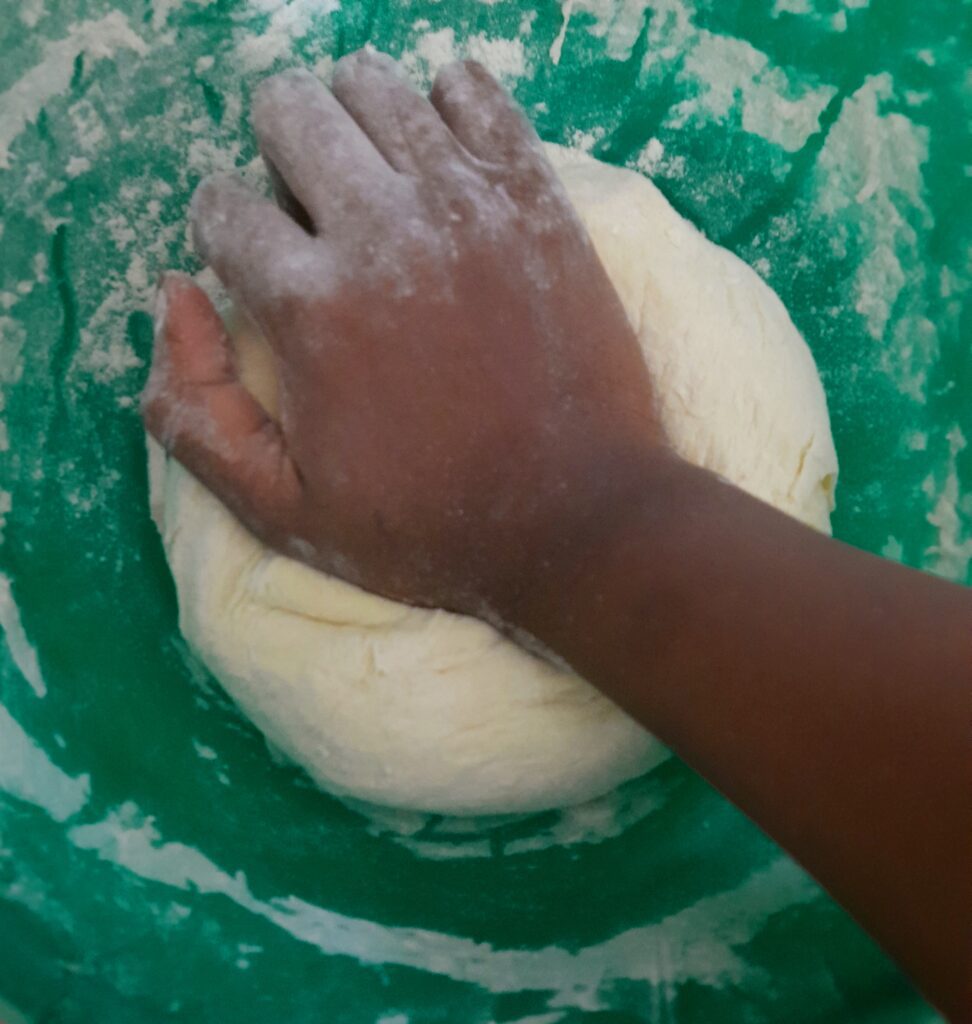
Kneed: Kneed using the heel of your palm to press and stretch until it becomes soft and non sticky your dough until well mixed. Transfer into a flat surface and kneed for 10 minutes. Aply oil or ghee and kneed for 5 more minutes.

Rest the dough: Cover your dough with damp washcloth or a wrapping paper. Let it rest for 30 minutes. This resting period allows the gluten to relax, making the dough easier to roll out and resulting in softer chapatis with better texture. I didn’t have a plastic wrap, so I used a plate to cover which is okay.

Divide the dough: After resting, divide the dough into equal-sized portions, roughly the size of a golf ball. This ensures that each chapati cooks evenly and puffs up nicely.
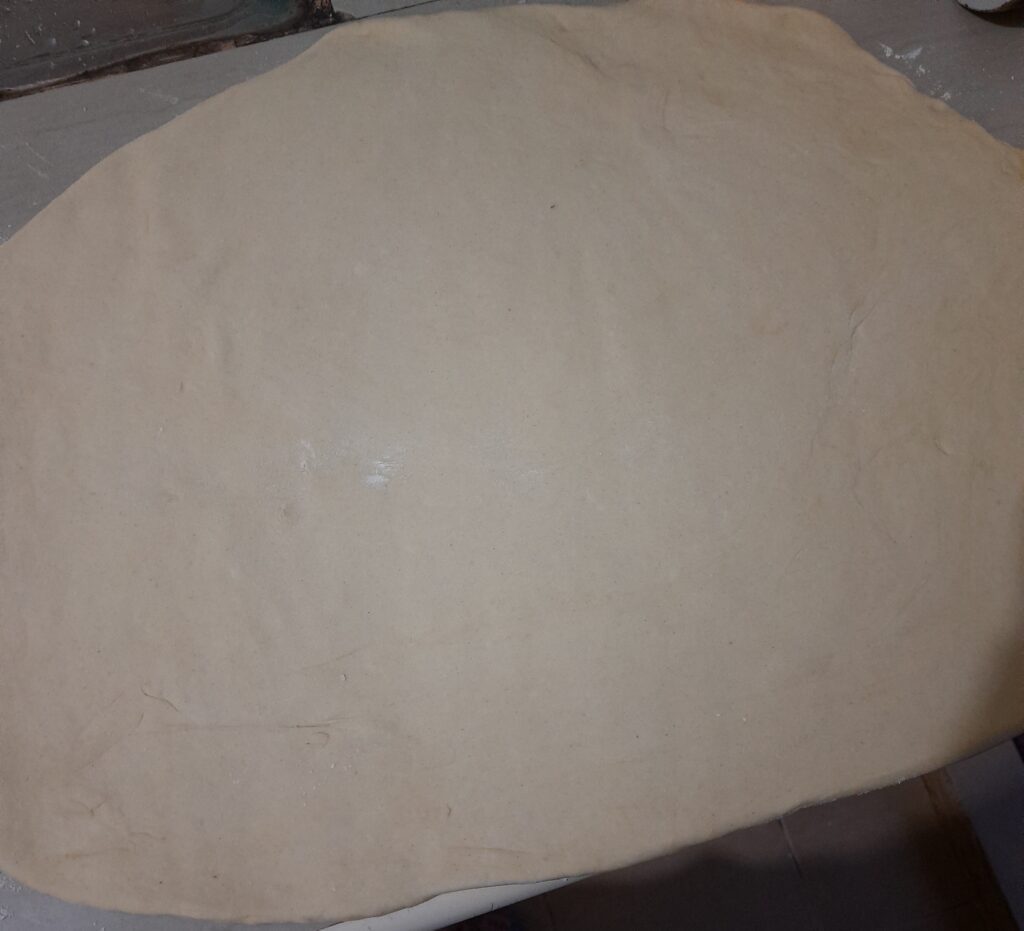
Rolling technique:
- Take one portion of the dough and flatten it into a small disc with your palms.
- To avoid the dough from sticking, simply sprinkle some flour on the work surface and rolling pin.
- Roll out the dough into a thin circle, applying even pressure and rotating it as you go to maintain an even thickness.
- Aim for a thickness of about 1-2 mm for soft and fluffy chapatis.
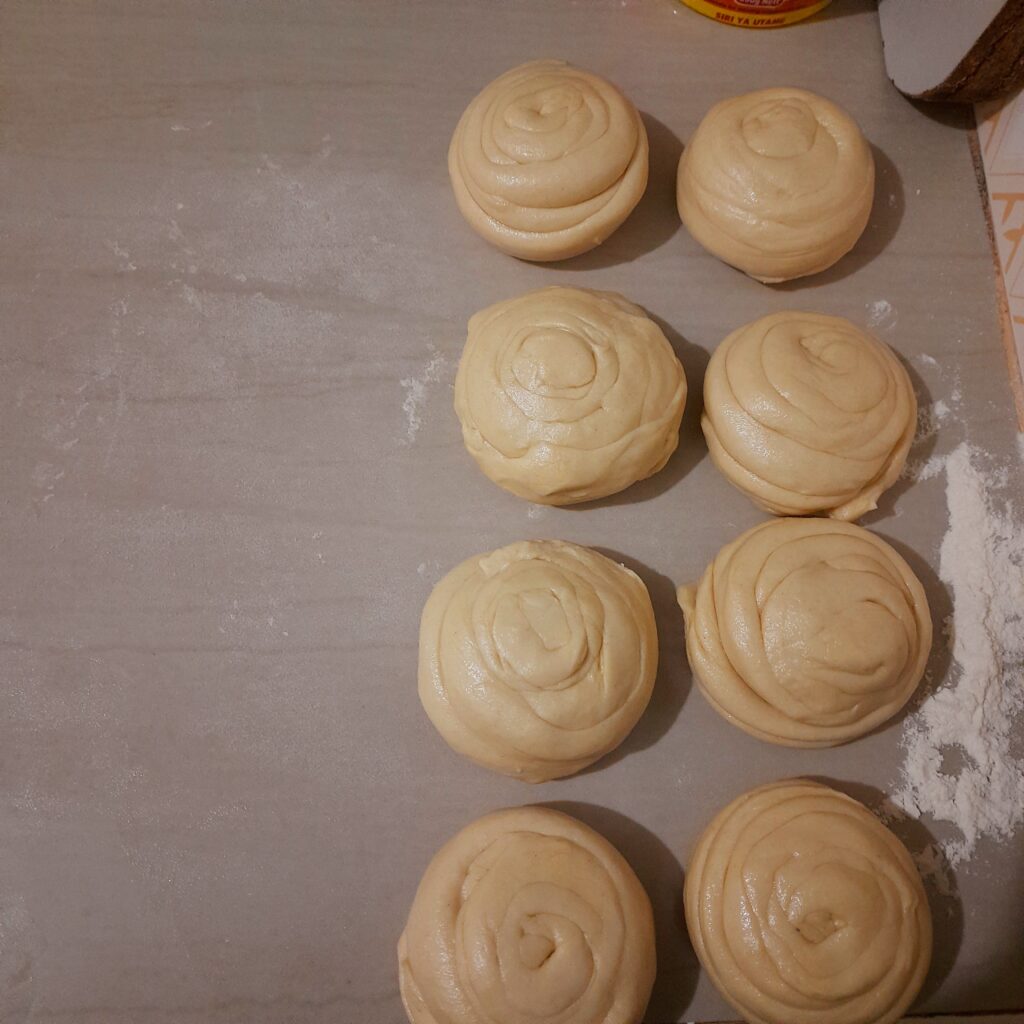
Laying technique:
- Brush a thin layer of oil or ghee over the rolled out chapati.
- Fold it into half to form a semi-circle, then brush another layer of oil or ghee.
- Fold it again to form a triangle, pressing lightly to seal the edges.
- Repeat the process with the remaining portions of dough, stacking the layered triangles on a plate.
Cooking:
- Heat up a non-stick skillet on medium-high heat.
- Place a layered chapati onto the hot griddle and cook for about 30-40 seconds on each side until small bubbles start to form.
- Flip the chapati and cook the other side until golden brown spots appear, pressing gently with a spatula to encourage puffing.
- Remove from heat and repeat with the remaining chapatis.
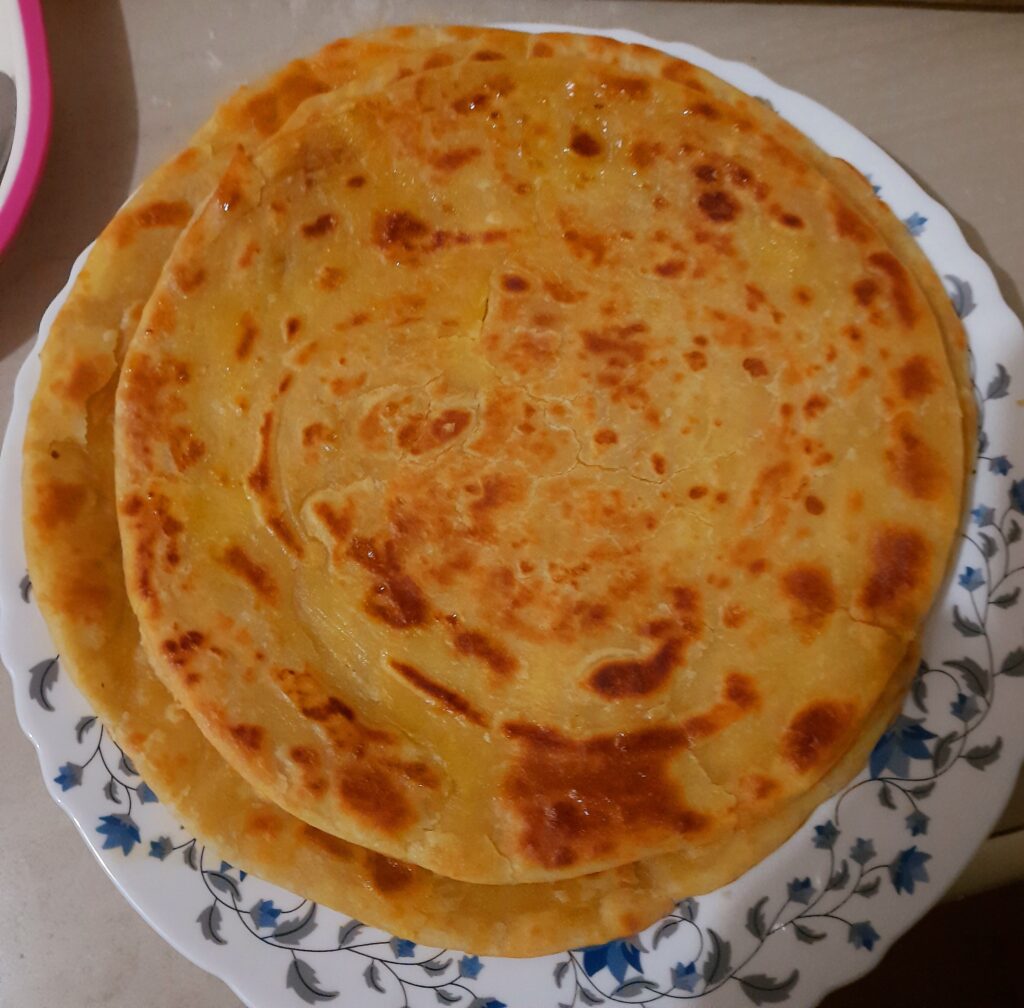
How to keep chapatis soft after cooking
To keep chapatis soft, store them in a clean kitchen towel or airtight container immediately after cooking. Reheat them on a hot griddle or microwave just before serving to restore their warmth and softness. Avoid overheating as it can make them dry.
Serving Size 1 medium-sized chapati
Servings 1
- Amount Per Serving
- Calories 202
- % Daily Value *
- Total Fat 5.1g8%
- Saturated Fat 1.3g7%
- Sodium 278mg12%
- Potassium 181mg6%
- Total Carbohydrate 32g11%
- Dietary Fiber 3.3g14%
- Sugars 1.9g
- Protein 7.7g16%
- Calcium 63 mg
- Iron 2.1 mg
* Percent Daily Values are based on a 2,000 calorie diet. Your daily value may be higher or lower depending on your calorie needs.
Chapati serving suggestions
- Pickles and Chutneys: Accompany chapati with assorted pickles, chutneys, or relishes for added taste and texture.
- Kebabs or Grilled Meats: Pair chapati with grilled meats or kebabs for a delightful combination.
- Eggs: Enjoy chapati with egg curry or as an accompaniment to boiled or scrambled eggs.
- Curries: Pair chapati with different curries such as butter chicken, chicken tikka masala, chana masala (chickpea curry), or paneer tikka masala.
- Dals (Lentils): Enjoy chapati with various lentil preparations like dal tadka, dal makhani, or lentil curry for a wholesome meal.
- Yogurt: Have chapati with a side of plain yogurt or raita (yogurt mixed with vegetables and spices) to balance out the flavors.
Soft layered Kenyan chapati recipe
Easy Soft Layered Chapati Recipe | Step by Step Guide
Course: BREAKFAST, LUNCH, DINNERCuisine: African, Kenyan, IndianDifficulty: Easy4
servings20
minutes40
minutes80
kcal1
hour30
minutesSoft layered chapati recipe guide.
Ingredients
2 cups whole wheat chapati flour (atta)
Warm Water (for kneading)
A pinch of Salt (to taste)
2 tbsp Sugar (optional)
Oil or ghee (for layering and cooking)
Directions
- Prepare the Dough: In a mixing bowl,mix your dry ingredients i.e whole wheat chapati flour, a pinch of salt, and 2 tablespoons of sugar. Sugar is optional. Make a well in the middle. Slowly pour in water while stirring your ingredients together. Kneed your dough for about 10 minutes until smooth and soft. Add some oil and kneed for 5 more minutes.





- Rest the dough: Let it rest for about 15-20 minutes, covered with a damp cloth or a wrapping polythene paper.

- Divide the Dough: After resting, divide the dough into equal-sized portions, rolling each into a smooth ball.
- Rolling and Layering: Grab a piece of dough and flatten it into a thin, circular chapati. Spread a thin layer of oil or ghee on the rolled-out chapati. Fold the rolled chapati like a fan or pleat it. Roll it again into a circle, being careful not to press too hard to maintain the layers.
- Cooking: Heat a skillet or tawa on medium-high heat.Put the rolled chapati on the hot pan and let it cook for around 30 seconds or until you see bubbles forming. Turn the chapati over and cook the other side for another 30 seconds. . Apply a little oil or ghee on both sides while cooking until golden brown spots appear.
- Serve: Remove from the skillet and place it in a covered container or wrap in a cloth to keep it soft.
Notes
- Remember thorough kneeding equals soft chapatis.
Dry chapatis can be a result of not adding enough water to the dough or overcooking them on the griddle. Make sure the dough is soft and pliable, and cook the chapatis on medium heat for a shorter duration.
Squeeze the dough for around 8 to 10 minutes until it turns soft and stretchy. This helps develop gluten, resulting in softer chapatis.
Key points
- Proper kneading of the dough is essential for developing gluten and ensuring a soft texture.
- Allowing the dough to rest allows the gluten to relax, resulting in easier rolling and softer chapatis.
- Layering the chapatis with oil or ghee creates flakiness and enhances softness.
- Cooking on a hot griddle or skillet until golden brown spots appear ensures a fluffy and delicious result.
- Storing chapatis properly and reheating gently helps maintain their softness and freshness.

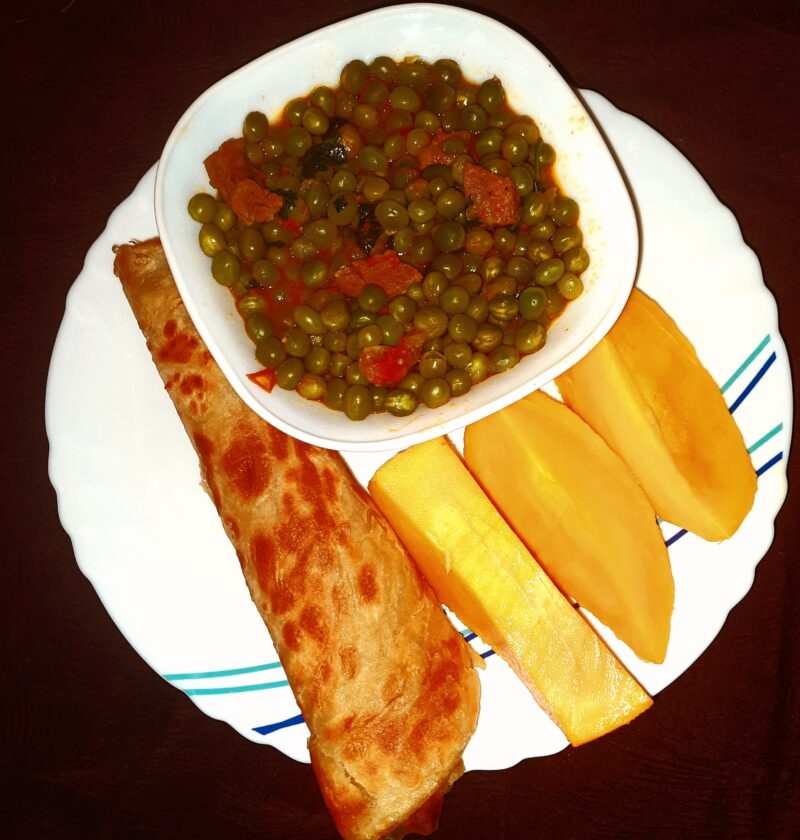
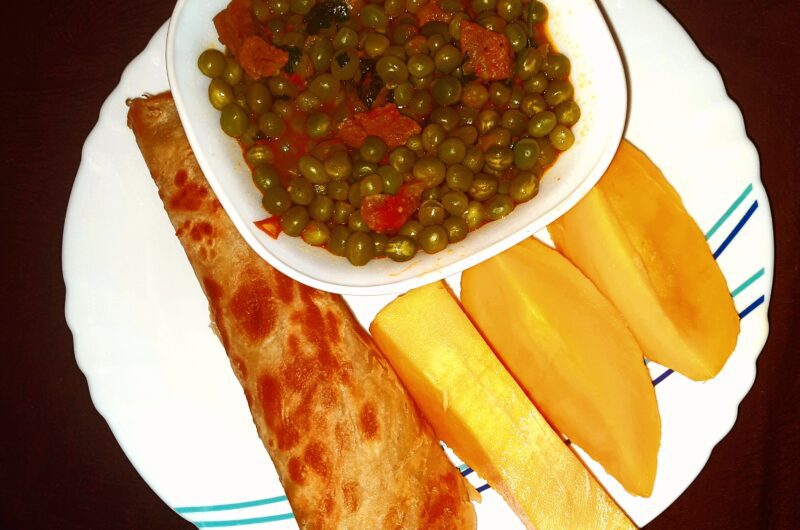






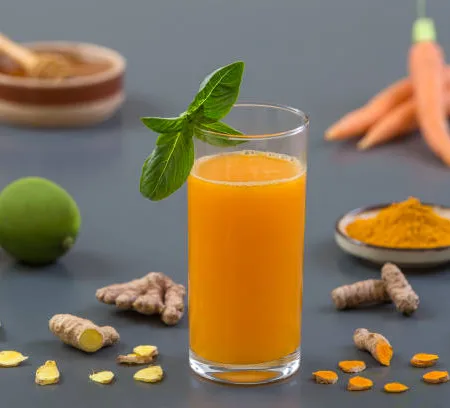



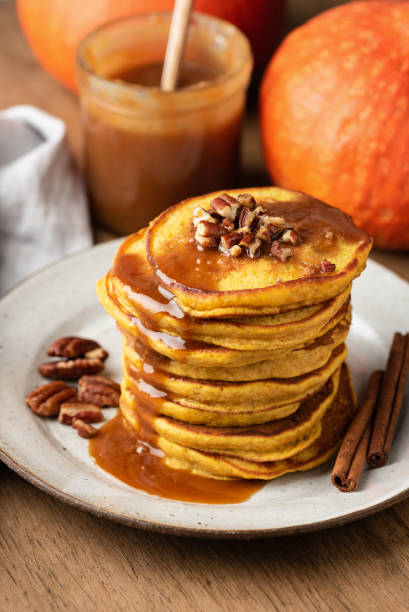
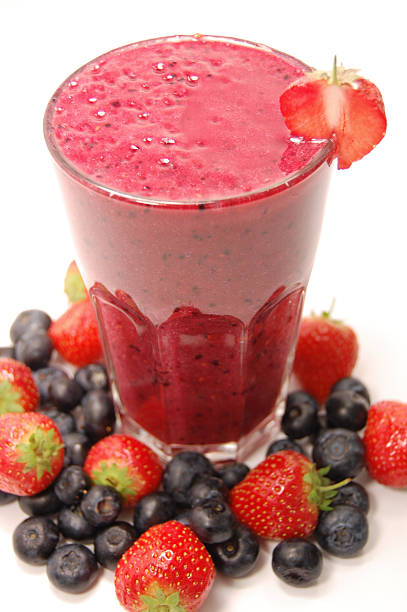

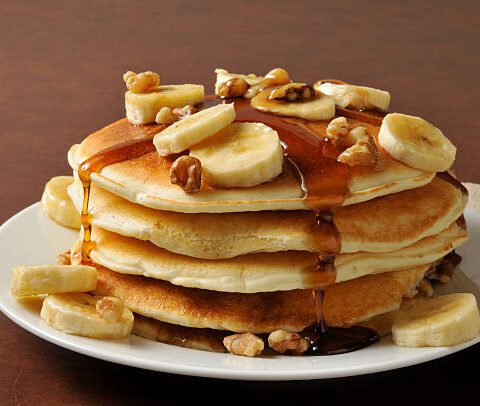

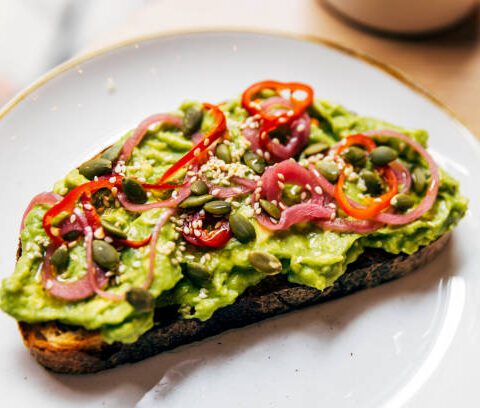
[…] You may want to try our soft layered chapati/roti recipe […]
[…] Soft layered chapati recipe […]